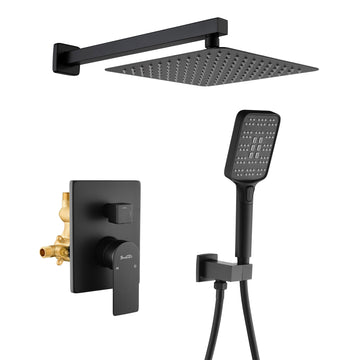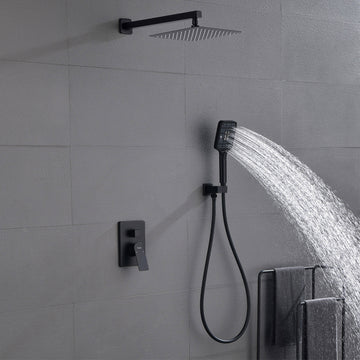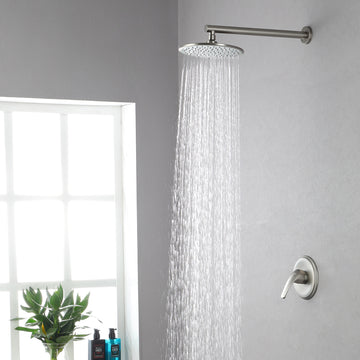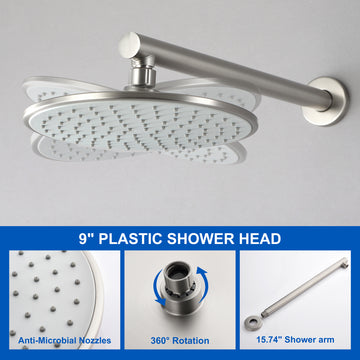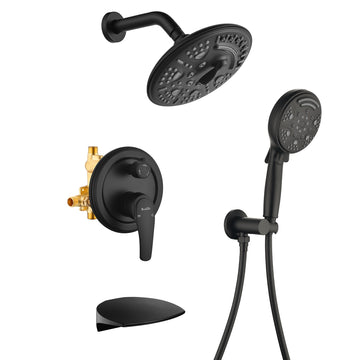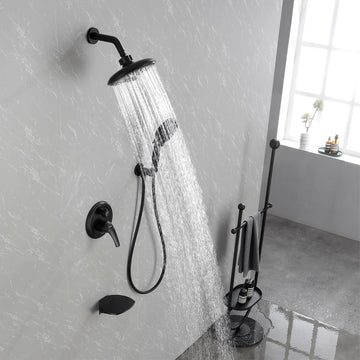How to Choose the Right Faucet Size: A Complete Guide for Your Bathroom
How to Choose the Perfect Faucet Size for Your Sink?
Upgrading your bathroom faucet can instantly refresh the room's look. However, the style isn't the only thing that counts. Choosing the right faucet size is a critical step that many homeowners overlook. Installing a faucet that's too large or too small for your sink can lead to daily annoyances and a mismatched aesthetic. This guide will walk you through everything you need to know about faucet dimensions to ensure a perfect, functional fit for your space.
Why Faucet Size Matters More Than You Think?
Selecting the correct size isn't just about looks; it directly impacts usability and longevity. Here’s why getting the size right is non-negotiable:
-
Functionality and Prevention of Splashing
A faucet that is too tall or has a short reach can cause water to splash out of the sink basin, creating a constant mess. Conversely, a faucet with insufficient height might not provide enough clearance to fill large pots easily. -
Aesthetic Harmony
A bathroom faucet should be proportionate to the sink and countertop. An oversized faucet can overwhelm a small sink, while a tiny one can look lost on a large countertop, disrupting the visual balance of your design. -
Durability and Proper Installation
A correctly sized faucet ensures a secure fit on the sink or countertop, reducing stress on the plumbing and surfaces. This proper installation minimizes the risk of leaks and potential damage over time.
Step-by-Step: How to Measure for a New Faucet
Before you buy, take these key measurements to guarantee a perfect match.
-
Number of Mounting Holes
Count the pre-drilled holes in your sink or countertop. Common configurations are one, three, or four holes. This determines the type of faucet (e.g., single-hole, centerset, widespread) you can install. -
Hole Spacing (Center-to-Center Distance)
For setups with multiple holes, measure the distance between the center of the left hole and the center of the right hole. Standard widespread faucet dimensions are often 8 inches, while centerset faucets are typically 4 inches. -
Faucet Height
Measure from the base of the faucet (where it meets the countertop) to the highest point of the spout. Ensure there is enough clearance between the spout and any overhead cabinets or shelves. -
Faucet Reach
Measure from the center of the faucet's base directly out to the center of where the water stream lands. This determines how far the water extends into the sink. A reach that is too short may cause water to hit the sink's rim. -
Consider Sink Depth and Material
A deep sink pairs well with a higher-arc faucet. Also, ensure the faucet's finish and weight are compatible with your sink material (e.g., stainless steel, porcelain, stone) to avoid scratches or damage.

Common Faucet Sizes and Types
Understanding standard faucet sizes will help you narrow down your choices.
- Standard Faucets: Typically 6-8 inches in height with a 4-6 inch reach. These are versatile and fit most common sink configurations.
- High-Arc (Gooseneck) Faucets: With a height exceeding 8 inches, these are ideal for kitchen sinks where you frequently fill tall pots and pitchers. They also make washing hands and face in a bathroom faucet easier.
- Single-Handle vs. Double-Handle: Single-handle models are more compact, ideal for smaller sinks. Double-handle faucets require more space but offer a classic look and separate control for hot and cold water.
- Wall-Mounted Faucets: These free up counter space but require precise plumbing during installation. Their "reach" is fixed by their placement on the wall.
What About Custom Faucet Sizes?
For unique sink configurations or specific design visions, custom faucet dimensions are an option. Many manufacturers offer customization for height, spout reach, and handle placement, ensuring a seamless integration into your space.
Conclusion:
The perfect faucet size is the cornerstone of a successful kitchen or bathroom update. It ensures efficient daily use, enhances your room's design, and promotes long-term durability. By following this measuring guide and understanding common sizes, you can confidently select a faucet that not only looks great but also performs flawlessly for years to come.























